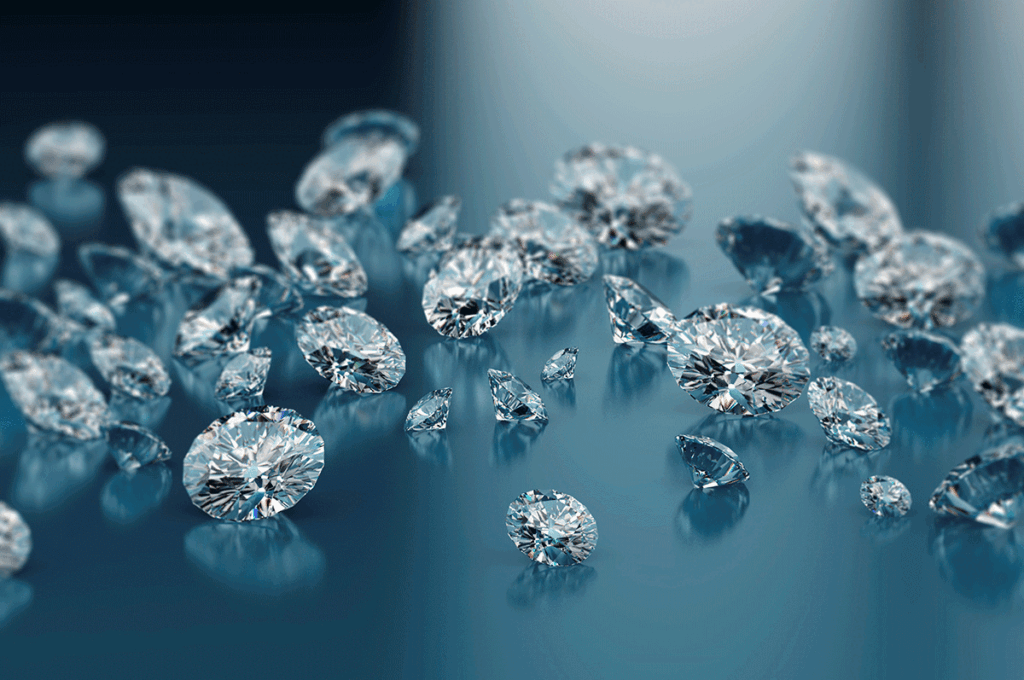“Sell the problem you solve, not the product,” is one of the well-known quotes about selling. And it couldn’t be more true when you go out to buy diamonds or diamond jewelry. Most people, including you perhaps, are always torn between stone size and sparkle and brilliance. If you are one of those who prefer size, a good salesman will definitely offer spread diamonds.
What You Need to Know About Spread Diamonds
It’s a fact that the physical size and carat size of a diamond are two different things. To be sure that you’re buying the diamond size that you have in mind, you have to be certain that both you and the jeweler are on the same page: is it carat size or physical size? Carat size is definite while physical size is perceptive. It’s a matter of the way a diamond is cut. Is it a deep-cut diamond or shallow?
This article shall dwell on the latter.
What Does a Spread Diamond Mean?
The main purpose of business is to earn profits. Unfortunately, some diamond salespeople take this a bit too far by selling you a gem that looks big in size but falls short in sparkle and brilliance. And that’s how spread diamonds came into the market
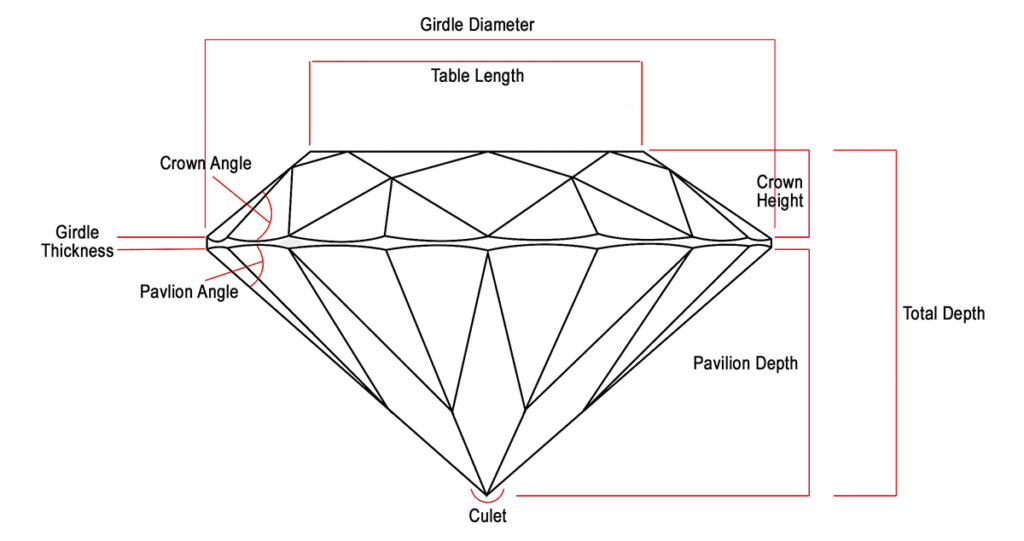
Spread-cut diamonds are diamonds that are cut shallow. They look larger than other diamonds of the same carat weight because the table is wider, while the depth is shallower than the recommended proportions.

Unlike in the case of the deep cut diamond, when the stone cut is too shallow, light hits the pavilion at a low angle. Its net effect is that light escapes through the sides of the stone instead of being bounced back through the table and to your eyes. A shallow-cut diamond lacks beauty, sparkle, and value.
How Important is Diamond Cut
The importance of diamond cut cannot be understated. In fact, of the 4Cs ( carat, clarity, color, and cut), it is one of the most important.
A diamond may have great color and clarity. But if it is poorly cut, it will look dull and lifeless. On the other hand, if it is cut properly, it will emanate fire, sparkle, and allurement.
Lest you be confused, by cut, what is meant is its symmetry and proportions, not its shape.
Symmetry
Symmetry means that all facets are exactly similar all around the diamond.
For example, the 58 facets (57 without a culet) of a round brilliant cut diamond must be exactly similar on any of its sides. In fact, gemologists have given names to any facet so they can be very specific in their work. To cite an example, on the crown, there are the star, kite, and upper girdle facets.
Proportions
A diamond’s proportion follows the formula set by Tolkowsky for maximum fire, sparkle, and brilliance.
- The total depth of the gem should be 59.3% of its diameter.
- The table should not be more than 53% of the diameter.
- The height of the diamond’s crown should be 16.2% of the diameter.
- The depth of the diamond’s pavilion should be 43.1% of the diameter.
- The diamond should have a crown angle of 34.5 degrees.
- Lastly, the diamond should have a pavilion depth of 40.75 degrees.
Any gemologist worth his salt knows that a great diamond cut is purely judgmental, as the “word” great is relative—especially to the carat weight of the gem. If a diamond with a small carat weight is given a large diameter, shallow cut or spread diamond results. On the other hand, if a heavy carat diamond is given a small table, the cut is too deep to allow light to escape through the pavilion.
Are Spread Diamonds Good?
A lot of people like to buy the biggest diamonds they can find. Sadly, they also don’t want to pay the extra amount large carat diamond sizes cost. Thus, they settle for spread diamonds. But is it a good buy? Are spread diamonds good?
The reason why people buy spread diamonds is that they look bigger and cheaper. But there is a hidden price for this. First and foremost is this: the shallower a diamond is cut, the more it drops in quality. They lack sparkle and brilliance compared to diamonds cut to the right proportion and symmetry.
Though they may still exhibit some sparkle, because of the shallow cut it losses more light at the bottom instead of being bounced back to the surface. This makes the gem less brilliant.
Another reason is the loss of durability. Because a shallow cut necessarily results in a thin girdle, the strength of the diamond around its periphery is greatly compromised.
Should You Buy Spread Diamonds
Buying spread diamonds is not entirely a bad idea. To some degree, they are still desirable to people who prefer size over brilliance. But be sure of your decision. There are Pros and Cons to consider.
Pros
- It’s cheap for the size you get
Cons
- They lack sparkle and brilliance due to their shallow cut
- Not as beautiful as regular cut diamonds
- Prone to chipping
- Less value
- Difficult to exchange or upgrade.
Be aware also that spread diamonds are never “Excellent” or even “Good.” The most they can get is “Poor.”
So should you buy a spread diamond, check its certificate to make sure you have the right carat weight. Some jewelers will only mumble the carat weight but won’t show you proof of your purchase.
And where can you find spread diamonds for sale? You can check reputable diamond dealers like the Blue Nile.
What Makes a Diamond Face Up Larger?
Diamonds can look face-up larger (other than spread diamonds) by the way they are cut. Elongated diamond cuts make the stone look larger. So do oval shape, oblong, marquise (like the one in this Bario Neal review), or emerald.
And this may prove to be a dilemma if you want to buy an engagement ring with a large stone on a small budget. How to make both your conditions meet. Well, these tips may help you…
How to make an engagement ring diamond look bigger
These practical tips can make your engagement ring look bigger than it really is:
Buy a fancy-shape diamond instead of round
Round diamonds look a lot smaller than their actual carat weight – and they are expensive. To go around this problem, buy a marquise or emerald-cut engagement ring. These cuts have better spread and cost much less. Besides, fancy shapes define the character of the ring; they augment your desire to make a statement.
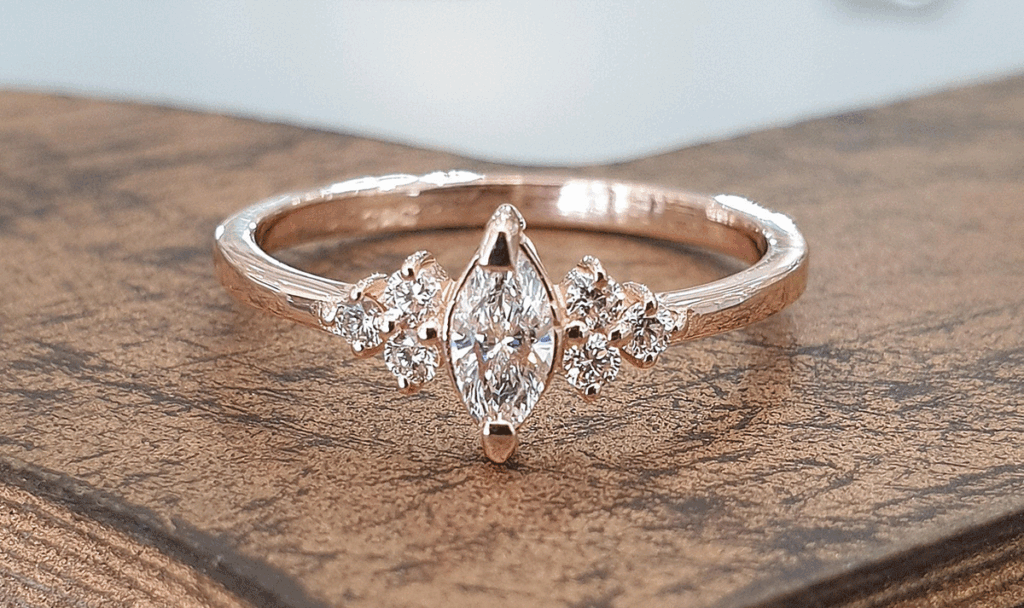
So, if you want to make a per carat comparison, marquise and pear shapes offer a better spread over your finger. However, emerald-cut diamonds have the best spread to carat ratio.
The drawback is that fancy-shaped diamonds are less brilliant than their round counterparts. Well-cut round brilliant always outperforms fancy-cut diamonds in terms of light performance. But they are better for their unique look and symbolism.
Don’t forget the cut
If you want your engagement ring to look as large as possible, choose the right cut.
While it is a given that cut makes a good diamond give off more brilliance and sparkle, it does the same to lesser-quality stones. So to make your engagement ring look larger than it is, buy one with a center stone of a Very Good or Excellent cut.
Go for a slim setting
Another way to make your stone look larger is to use a slim and delicate setting—slim band and prongs. A wide band and bulky prongs will hide a large part of the ring’s center stone.
Use Halo or Cluster Settings
These settings use melees (small diamonds) placed into leveled holes and held in place by prongs. The result is the coverage of a large area of the ring, making the diamonds look bigger.
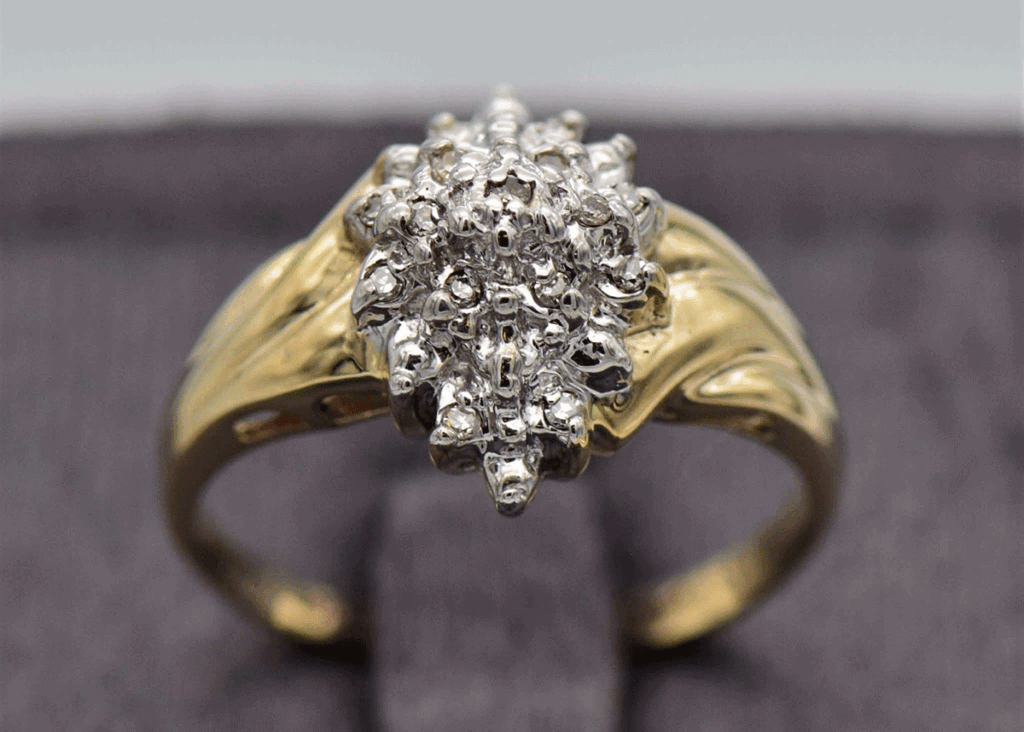
The small reflective diamonds are packed closely together, creating a fused appearance. If done well, it is extremely hard to figure out where the smaller individual stones are unless closely examined. Careful placement of clustered diamonds like the ones used in this Bario Neal review creates the illusion of a single large stone.
Choose a bright, light metal setting
Some metal settings can make a diamond look larger than it actually is. For example, platinum and white gold. These metal settings will reflect the engagement ring’s center stone like a mirror, making it look larger.
And in case it has slipped your notice, white gold is more reflective than platinum and costs much less. Specifically, 18K white gold with its rhodium plating is extraordinarily shiny.
Accentuate the center stone with smaller side stones
An engagement ring with small accent stones always looks more attractive and extra extravagant. But this need not be so extravagant if you choose your ring wisely.
When you go out to shop, look for a ring with small accent stones to make the center stone stand out for people’s attention. And it should have fewer and thin prongs. More and thick prongs hide a huge part of a diamond’s real estate.
Choose a bezel setting
A bezel setting is probably unattractive to most people but for practical reasons, it is one of the most popular engagement ring settings.
The bezel setting is a ring design whereby the stone’s perimeter is surrounded by a metal casing. Not only does it make the center stone look larger than it actually is, it also provides excellent protection to the center stone against chipping during normal wear.
It may look chunky but it shows more of the diamond center stone due to the absence of prongs. Besides, it is better in hiding whatever flaws and inclusions a diamond may have.
The downside is that with poorly designed bezel settings, the stone may look smaller and yes, it is not as sparkly as other ring setting designs.
Buy a ring with a spread diamond center stone
Of course, if you want to have an engagement ring with a diamond that looks larger face-up, then have a shallow-cut diamond center stone. The center stone will be physically larger than ideal cut diamonds but less shiny and brilliant.
Take note, however, that it won’t have as much light performance compared to other diamond cuts. But they may look great for people with shoestring budgets
What are Flat Diamonds?
Flat-cut diamonds differ from the traditional brilliant cut in terms of the number of facets. While the brilliant-cut has 58 facets (including the culet), flat diamonds have somewhere between three to 24 facets. And they are called flat diamonds due to the fact that they have flat bottoms.
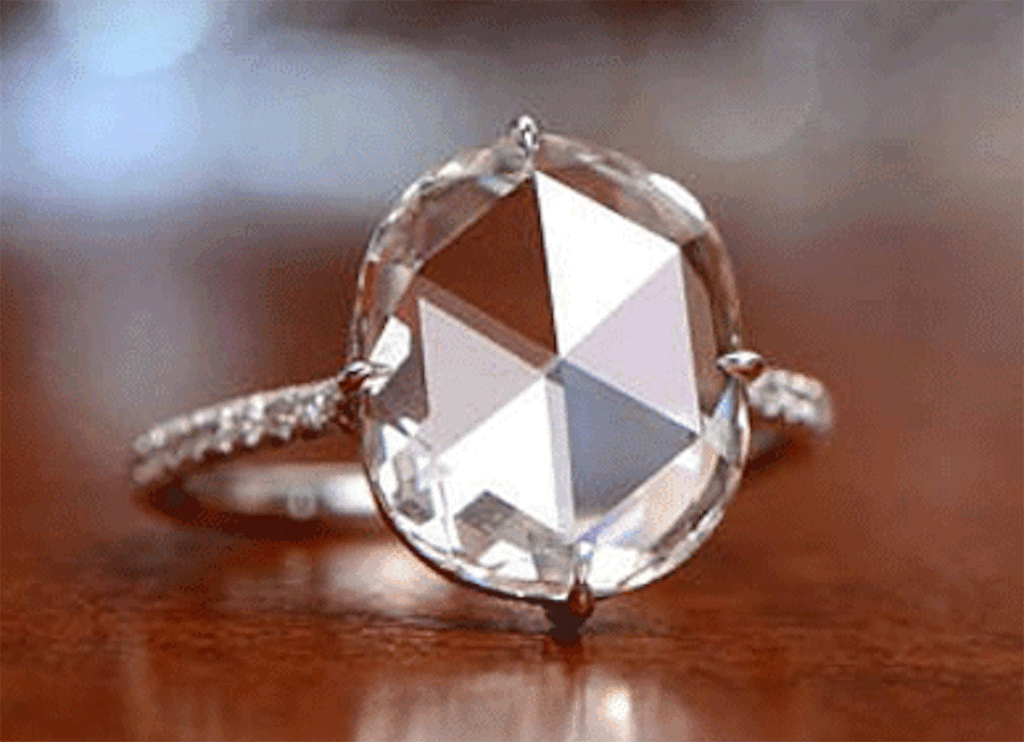
What are flat diamonds called? In the industry, they are called Rose Cut Diamonds because they resemble the shape of the rosebud but with a flat bottom, which creates a larger surface area to create brilliance.
Aside from a flat base, rose-cut diamonds also don’t have a pavilion, which is the point base typically seen on modern round brilliant. If seen from above, they appear much larger than another piece of stone of the same carat weight. In effect, rose-cut diamonds have practically the same optical effect as spread diamonds.
However, everything is not so rosy with rose-cut diamonds.
Reasons why people are not impressed with flat diamonds
In 2012, Justin Theroux gave Jennifer Anniston (later his ex-wife) an enormous rose-cut diamond. Sadly, it did not cause enough stir in Hollywood to cause a trend.
Here are some reasons why diamond lovers are shying away from it:
They don’t look like diamonds
Round brilliant diamonds have an unmistakable brilliance and sparkle and emeralds have a slender flash. Flat diamonds don’t have any of those.
Flat diamonds don’t sparkle
All diamond cuts give off some sparkle, some more than others. But flat diamonds have none. In fact, some diamond lovers call them nothing but plain glass.
Rose cuts can’t be cut into something else
Over time, other cuts will ultimately be re-cut into something else. Most of them will end up as round brilliant. Rose-cut, however, will look terrible at being anything but a rose-cut. Re-cutting one will only produce tiny little diamonds, which would cost much less than the original.
Are Spread Diamonds for You?
Diamonds can be cut in several ways. Currently, there are ten most popular cuts in the market. While the round, princess, Asscher, and radiant are considered the sparkliest, others give off some spark and brilliance to a lesser degree. Spread diamonds and flat diamonds are the ugly ducklings of the brood, Though they may claim to be the largest face-up-looking diamonds, they fall short of the brilliance, the fire, and the sparkle of the regular and common cuts.
If you want to know more about other diamond cuts, check out our article, “Choose Your Cut: Comparing Emerald Cut vs Radiant Cut Diamonds.”
